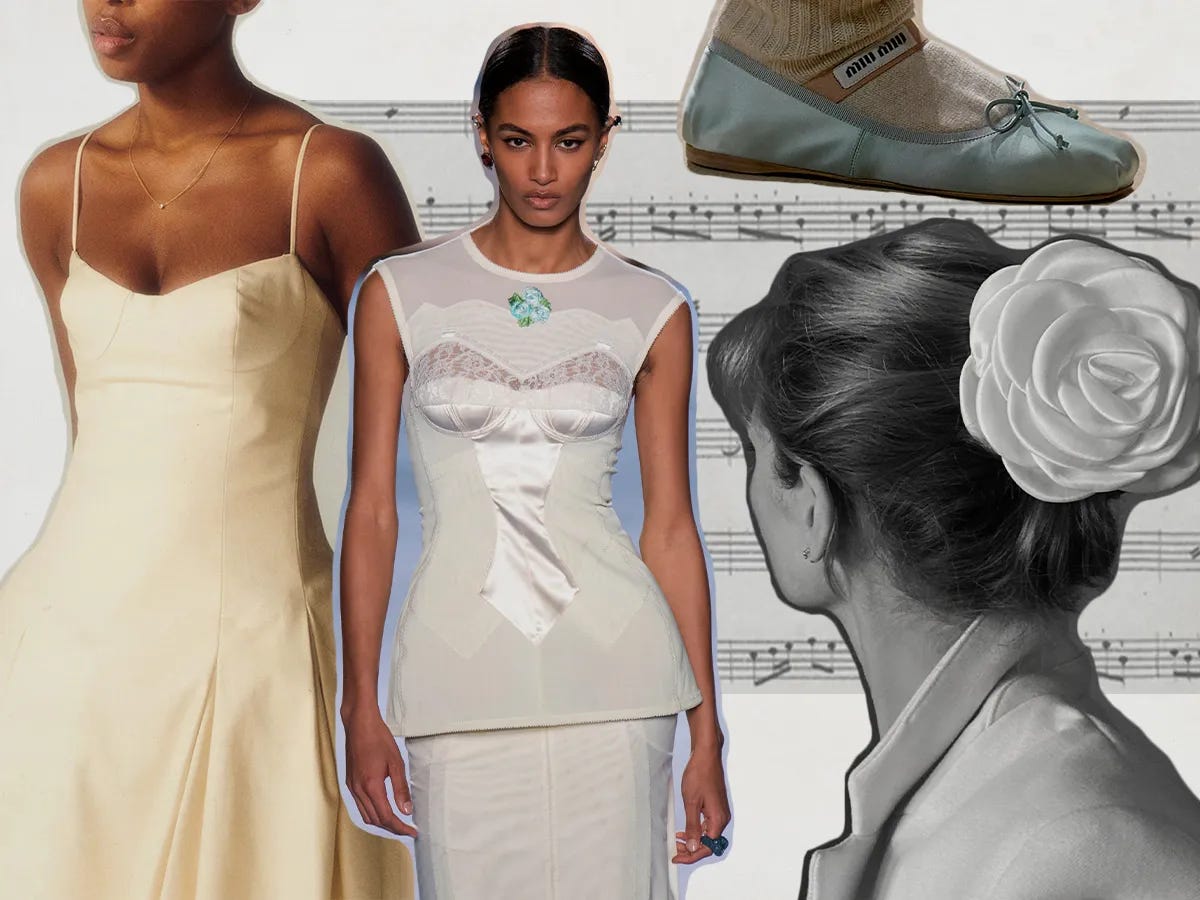IS THE TREND CYCLE FINALLY SLOWING DOWN?
Biggest recession indicator of all?
Lots of talk of recession indicators in the feeds this week. Reuters reports this morning that “The risk of a U.S. recession is 50-50, it's that close.” Goldman Sachs places odds at 45% and JPMorgan at 60%.
I wonder if the biggest tell could be that the frenzied trend cycle that's dominated consumer culture, addled our brains, dominated/distracted/plagued industry discourse, and drained our wallets for the past few years might finally be showing signs of fatigue.
It seems mad to suggest - the hauls and empties videos and faves and GRWMs won’t stop. But there are a lot of early signals that the endless procession whipping through our feeds as we scroll through our 300ft of content a day.…the coquettes, office sirens, hot girls, cold girls, tomato girls, weird girls, mob wives, balletcore, cottagecore, normcore, gorpcore, core-core…are starting to show up with a bit less frequency.
Why?
Firstly, a trend cycle running this fast + hot is starting to experience increasing pressure economically. Global GDP’s set to slow to 3.1% in 2025 (down from 3.3%, OECD). UK consumer confidence is at its lowest since December 2023 (GfK). And retail sales were down by 0.8% yoy during 2024’s peak Q4 golden quarter. The job market remains tight and the cost of living remains high.
Against that backdrop, trend-chasing becomes an increasingly expensive habit to maintain.
But it isn’t just the economics of it it all. It’s the emptiness of it all.
These short-lived trends are as psychologically unsustainable as they are environmentally unsustainable. I think it’s clear why there has been such a sharp rise in heat around *personal style* over the past year or so. Set against all the hollow churn of micro-trends, nailing your own style offers us v sexy things:
PERMANENCE in the motion-sickness whiplash merry-go-round.
AUTONOMY when so much feels out of our control.
INDIVIDUALITY vs algorithmic groupthink.
CLARITY in the confusing melee of too-much-choice.
"We were on a hamster wheel and we couldn't get off it, and that has changed."
- Mia Jacobs, a senior forecaster at WGSN speaking on a BoF podcast this week.
A few indicators I think suggest the trend cycle might be decelerating…well, to slightly less rabid:
1. Acts of resistance from progressive minds
We’re seeing pushback on the unrelenting firehose of trends and aesthetics.
75 Hard Challenge gained enormous traction around being creative with your existing wardrobe rather than caving and buying into the trend cycle. It inspired many others, and suggests the needle is shifting - being decked out in the latest no longer feels like a high status behaviour to the truly initiated.2. Extended commercial cycles
McKinsey's State of Fashion 2024 details how a lot of mainstream retailers are moving away from the 4-6 week product turnover model that dominated the 2010s. Even fast fashion players are introducing more evergreen or trans-seasonal pieces that stay in stock longer. And a lot of the luxury houses have for the past few years been opting out of some of the relentless commitments of the fashion calendar (in part to protect their design teams from burnout, but also as a statement of intent).
3. Wardrobe management as honed skill (that smart people are building businesses around)
See the explosive growth of organisational frameworks like wardrobe design systems, capsule wardrobe creation, colour season analysis, Kibbe body typing and Alison Bornstein's three-word method. All indicate a collective hunger for order…to reduce the chronic overwhelm created by the out-of-control trend cycle. All are systematic methods of slowing down and making more deliberate, less mindless, choices.
4. Patina as a status signal
We’ve talked about this a lot here, too - the growing cultural value attached to things with visible history. When vintage Levi's or artificially pre-distressed sneakers command higher prices than new ones, and vintage handbags are cooler than the new, overpriced ones, we’re seeing a shift in how we assign value/kudos/respect. Any sort of appreciation for patina runs counter to our accelerated trend cycle’s never-ending newness.
So of course the trend cycle is far from dead. But it is clearly changing.
Perhaps this apparent deceleration is actually an acceleration of something else: a return to consumption as a form of actual identity-formation and actual self-expression, rather than conformity.
What do you think?
Until next time/thanks for reading.
bb





You know I'm always such a big fan of the thoughts you bring up and I'm truly thrilled to hear that the trend churn is slowing. Sometimes I worry that it's only in the corner of the internet I occupy but it sounds like anti-trend is a larger trend. Again, thrilling.
Here's something that I'm stunned by. I am reading and experiencing the very real recession indicators. I'm rethinking my spending and my family budget is changing to keep up with rising grocery costs, etc. And yet, recently someone posted a poll asking their readers what they wanted to see more of and the answer was "shopping links." Are we all still shopping all the time but wanting affordable options? My instinct is to shop less but maybe I'm the anomaly. I can't make sense of it.
Is it really slowing down? Or has it sped up so much that trends now disappear as quickly as they arrive? When everything's trending, is anything really trending at all?